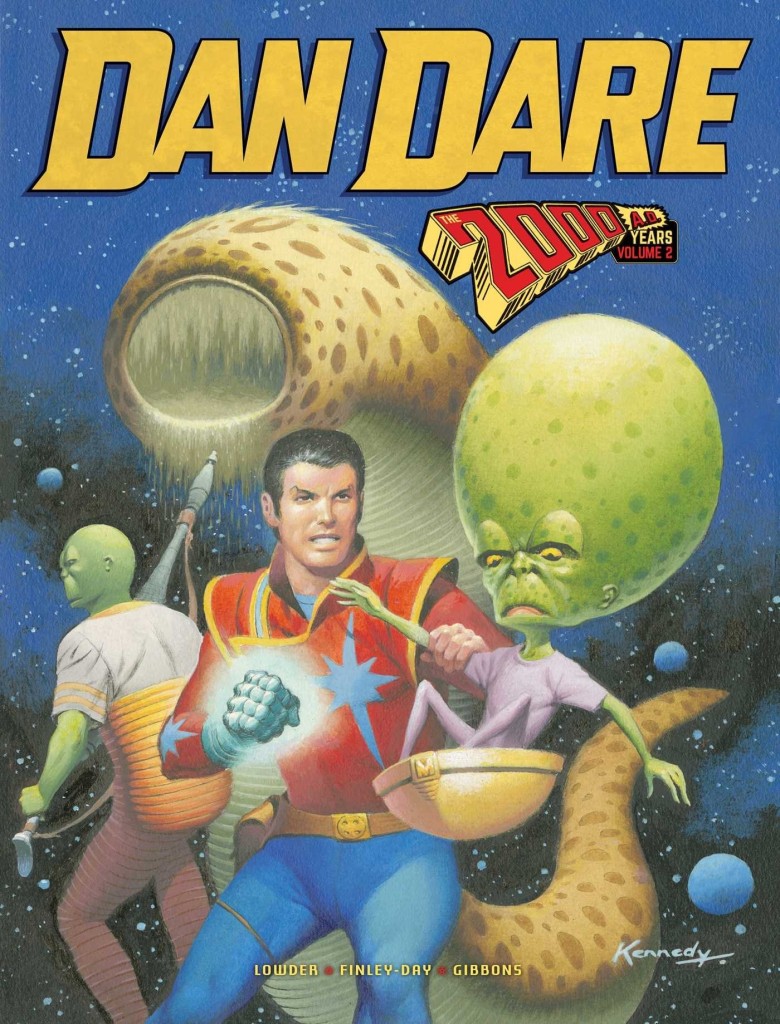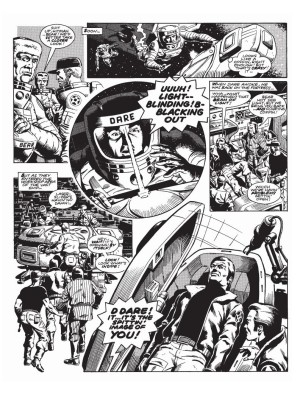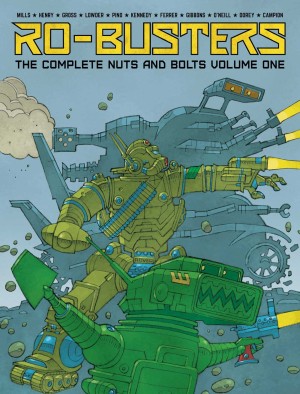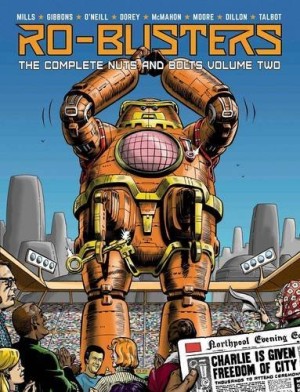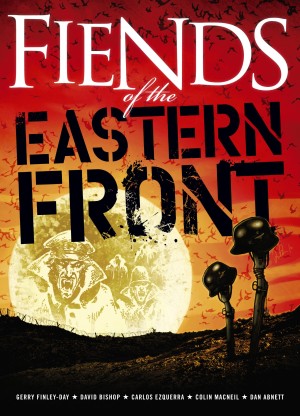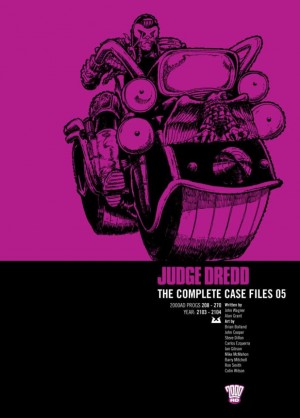Review by Frank Plowright
By the time of the material printed in this collection, beginning in early 1978, there was no longer any pretence of Dan Dare having connections beyond the name to the original 1950s wholesome predecessor. This Dan was a jawbreaker in the mould of several other proactive violent heroes in the early 2000AD, and he surrounded himself with like-minded types who physically enforced their definition of right and wrong. A loving introduction from Garth Ennis tackles the issue head on, noting he loved this Dan Dare as a child.
Two main writers take on Dare, and they have differing approaches. Tom Tully writes most of the collection’s second half, and he’s very much old school, seeing the task as providing four or five pages of action ending on a cliffhanger to ensure the readers picked up the next issue. His work lacks any kind of long-term vision, and meanders episodically until the strip was cancelled without the storyline being resolved (an article at the book’s end explains). Chris Lowder, writing as Jack Adrian, differs by providing better basic concepts over a fixed number of episodes and having a conclusion in mind.
Lowder is responsible for the collection’s best plot with ‘Mutiny’, which scores above the remainder by not relying on the predictable and inevitable slaughter of aliens as the threat comes from within. The spotlighted supporting cast have their own problems, and it seems not all side with Dare anyway. There’s a less successful dry-run with a duplicate Dare opening the book.
Most of the content is raised considerably by the art of Dave Gibbons, whose art is primed to poke at the thrill centres of young readers. His monsters are fantastic, particularly the giant tentacled beast in ‘Waterworld’, and the devices he designs for Dan and crew have been considered for function, yet still look stylish, to which years of reading comics have provided instinctive storytelling. Further art is provided by some all too infrequently seen British greats. Brian Lewis died young. His Dare and crew are a little more sedate, and his approach more psychedelic, while the team of Trevor Goring and Garry Leach’s offer a detailed precision and promise rather than at that stage being the complete article.
Tully appears to have been under editorial instruction to change the strip’s direction. He discards the previous supporting cast, and his discursive plot reintroduces the Mekon and Sondar from the classic 1950s strips. An amnesiac Dare is manipulated by the Mekon, and turned by increments into what’s not too far removed from a superhero. Ennis’ introduction points out the faults of Dare earlier in the book, but this makeover only serves to remind older fans of the original quality, while providing only base level entertainment for the readers of the 1970s. Without Gibbons’ dynamism this would be poor.
The book concludes with a number of one-off strips produced for 2000AD annuals and specials, where the credits have long been lost. Two are text and illustration, and the two strips are very obviously tryout strips for prospective new artists. They’re best left to posterity, while Kev Walker’s brief 1990s strip looks good.
Dan Dare The 2000AD Years is aimed squarely at the original readers, young in the 1970s who long ago discarded the comics in which it appeared, and enthusiasts of Dave Gibbons’ art, now probably greater in number. Anyone else is unlikely to be greatly satisfied given the far more sophisticated science fiction graphic novels available today.
